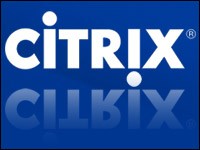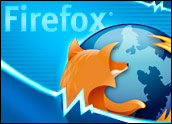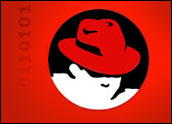
Citrix and HP announced a deal Thursday that integrates the virtualization company’s XenServer into HP’s 64-bit ProLiant Servers. The jointly developed server virtualization solution, Citrix XenServer HP Select Edition, will be available to both HP and Citrix customers.
The new offering provides users with a graphical management console and is integrated with the same HP Insight Control management software that customers already use to physically administer their HP ProLiant servers, the company said.
“Citrix had already announced its plans to deliver in Q1 an embedded hypervisor to compete with ESX 3i and hinted at HW OEM (original equipment manufacturer) commitments. This is clearly the first of these agreements,” said James Staten, a Forrester Research analyst.
Citrix has previously announced similar OEM agreements with Dell, NEC and Lenovo. The HP version of Citrix XenServer will be available on 10 models of ProLiant servers beginning March 31.
Embedded Together
Citrix XenServer extends the development and testing resources of the open source Xen virtualization engine, according the company.
The integrated software is aimed at offing users a simpler deployment and management environment that speeds adoption of server virtualization technology.
The technology included the new HP ProLiant iVirtualization offering, which integrates virtualization capabilities into the ProLiant server platform and enables customers to virtualize their server environments. Users can boot up a Citrix XenServer environment whether it’s a single server or part of an end-to-end Citrix system for server, application and desktop virtualization, Citrix said.
Consumers will also receive the new HP ProLiant Virtual Console (PVC), an offering unique to the Citrix HP platform. The tool provides the same graphic user interface to set up and manage virtual machines HP customers already use to set up and manage individual physical servers. HP PVC also provides single server virtual machine management using the server’s local keyboard video, according to Citrix.
The level of collaboration was surprising, Staten told LinuxInsider.
“The virtualization management tool from HP shows a better degree of collaboration by Citrix and the hardware OEM and the more openness of its infrastructure. ESX 3i [VMware’s solution] is managed by Virtual Center, and there are APIs (application programming interfaces) the hardware vendors can leverage for integration with their own management tools. With XenServer, HP was able to bypass the Citrix management tool and deliver one of its own that better leverages and integrates with their own,” Staten noted.
Virtual Integration Goes Mainstream
The announcement from Citrix, which acquired virtualization software maker XenSource in October 2007, follows VMware’s announcement in February that it has partnered with HP, Dell, IBM, Fujitsu and Siemens to embed its VMware ESX software.
As companies such as Citrix and VMware move to make their software part of the mainstream offerings available to businesses, the benefit for enterprises and small- and medium-sized businesses is the so-called out-of-the-box deployment that makes deploying the software nearly as simple as turning the machine on.
“This is really the beginning of the next phase of the virtualization market. The move toward embedded virtualization on server like Citrix and HP are doing together is a lot like the move to take something like a GPS (global positioning system) device from an add-on product to an integrated part of a car’s dashboard,” said John Bara, VP of business operations for Citrix Systems.
The recent agreements also point to a decision by server manufacturers to remain neutral as virtualization software companies compete for market share, said John Enck, a Gartner research analyst.
“All of the server vendors — HP, Dell, IBM, etc. — are backing all of the major virtualization products — VMware, Citrix, Microsoft, Oracle, etc. The server vendors want to remain neutral on this front; they don’t want to limit or force choices on their customers,” he told LinuxInsider.
This means that although Citrix clearly benefits from this association, it will be up to Citrix to promote the use of XenServer and ProLiant, Enck continued.
“HP will maintain a neutral tone in the field. The same is true of VMware, Microsoft and the others — it’s up to the virtualization vendors to drive demand. The server vendors will be sitting back and watching,” he added.
For businesses, server vendors’ neutral stance is a win-win for them because it puts the power of choice in their hands.
“This continues the evolvement of virtualization specific to types of architectures customers are looking at deploying. VMware is clearly the leader, but they are not the only game in town. HP, being the system vendor they are, is making sure customers have the options to choose how many and which hypervisors they want to use. It’s really providing customers options,” Stephen Elliot, an analyst at IDC, told LinuxInsider.










































